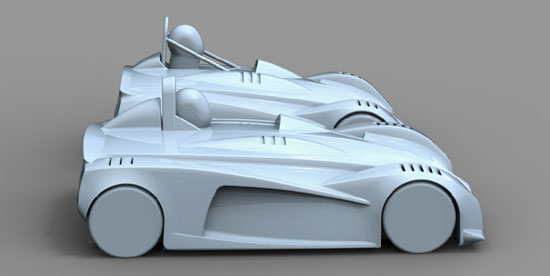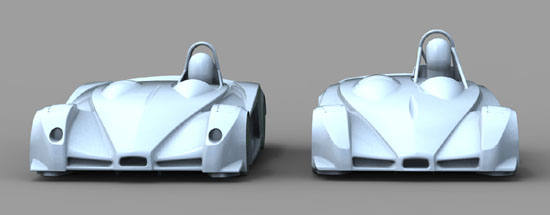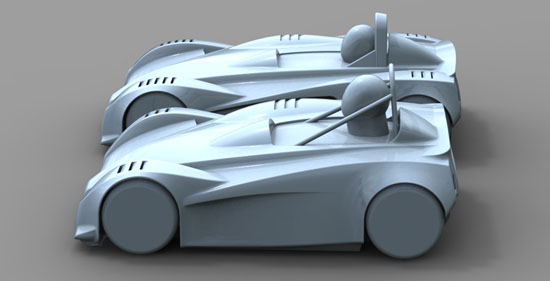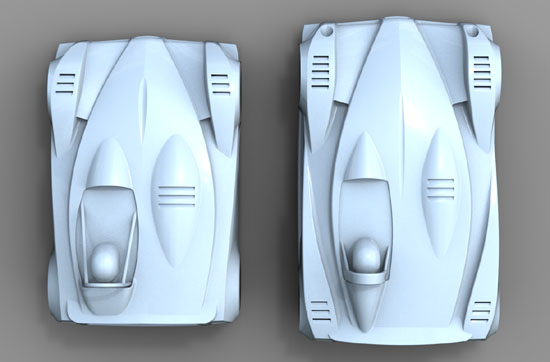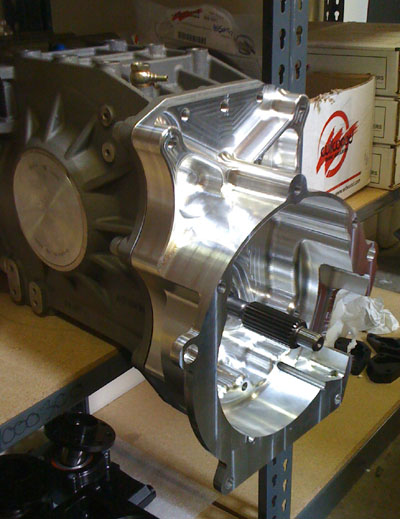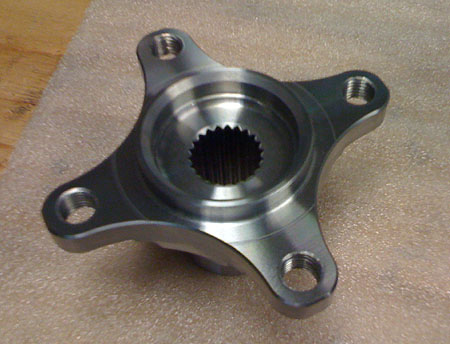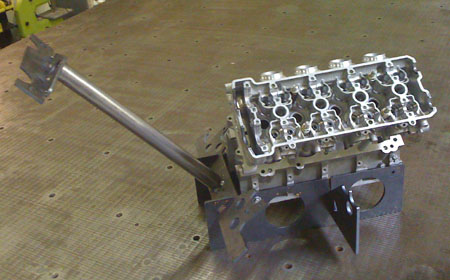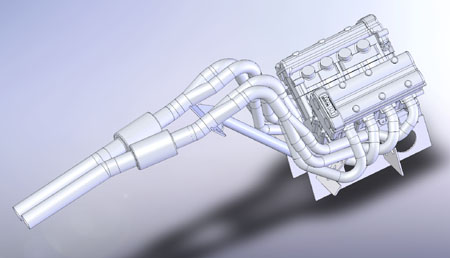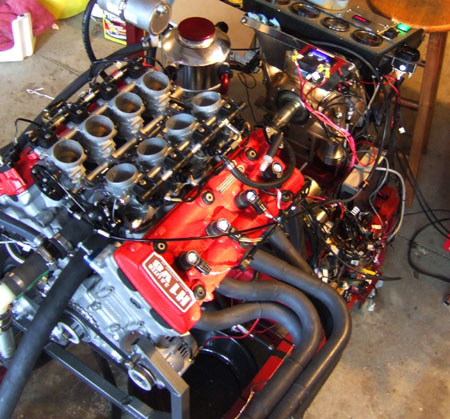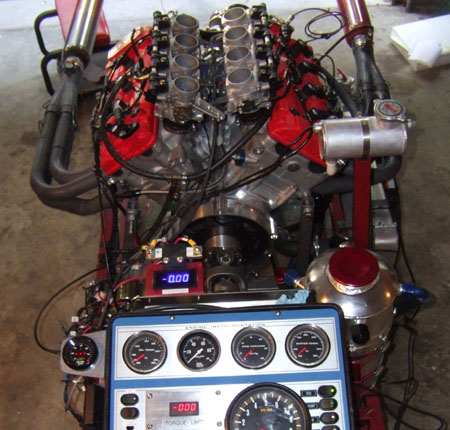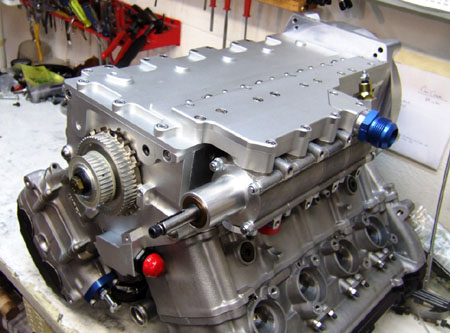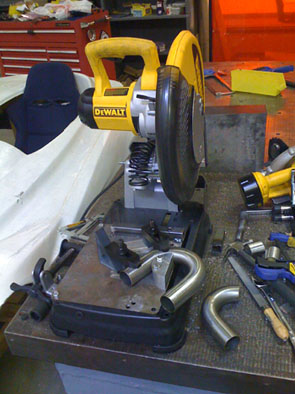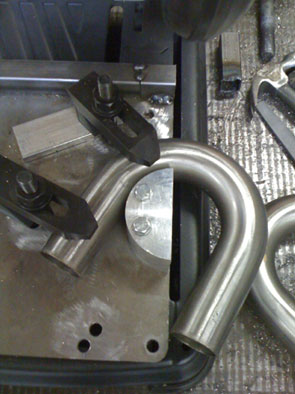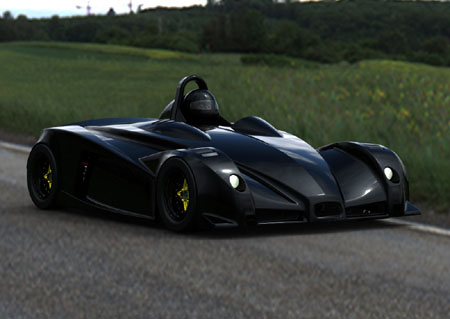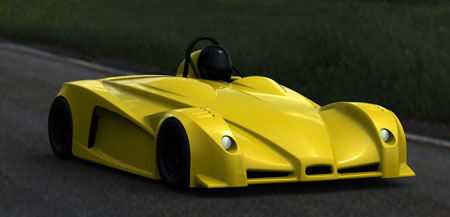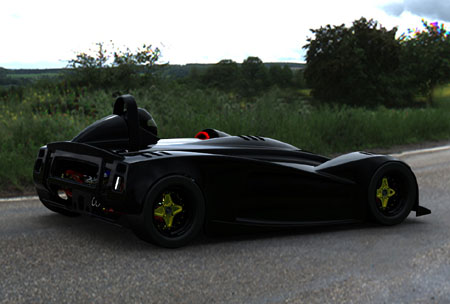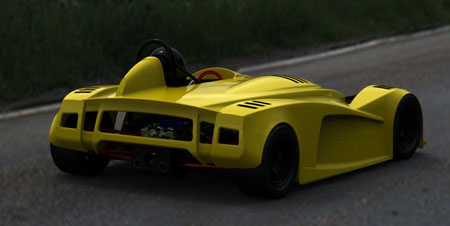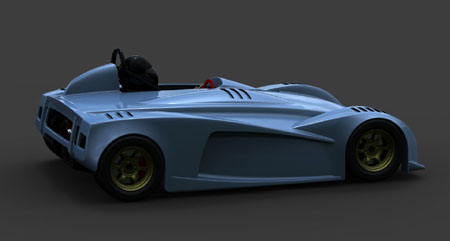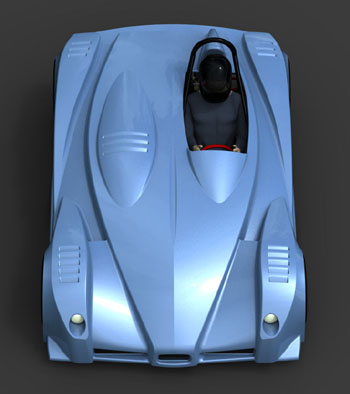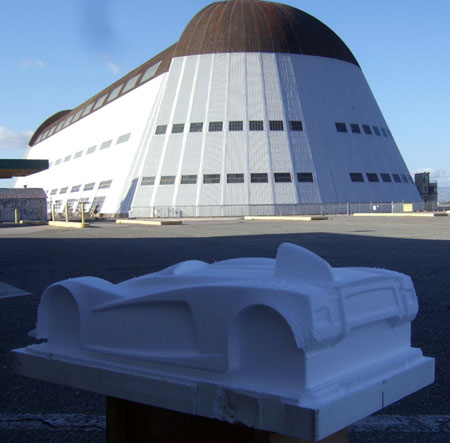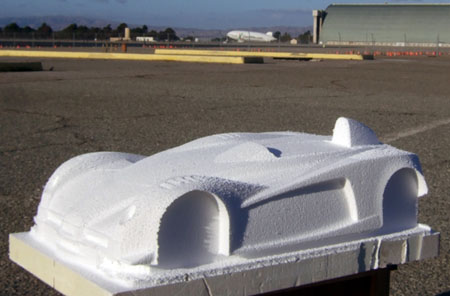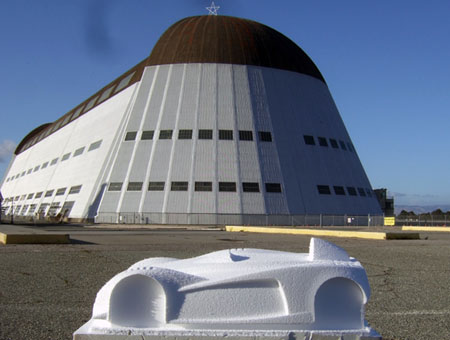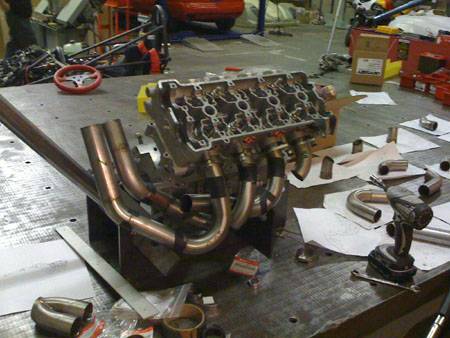|
06/06/09 I haven't had an update on the dp1 page in quite some time. The main emphasis at the moment is on getting the dp4 finished first, however work still continues on the dp1 as well. Aside from the engine being built and a number of components being fabricated, some analysis is taking place at the same time - yes I will discuss the results in some detail here when I get them. To that end I've recently created simplified models of dp1 and dp4 for CFD and realized that putting them side by side gives a pretty good comparison of the two cars.
The reason for making simplified models is that the process is extremely computationally intensive and takes a lot of resources and time even on modern computing clusters. So any detail that is not essential to the evaluation being performed should be left out. This does introduce some inevitable degree of inaccuracy so deciding what to leave in and what to leave out is a bit of an art. Likewise, the approximations and assumptions made in creating the models (and in the computation itself) must be kept in mind when interpreting the results. The models I've made only include a very rough approximation of internal airflow, basically just enough to account for the effects it might have on external flow. While the capability is certainly there to evaluate things like heat exchanger performance it requires quite a bit of additional setup and component data to be of much use. So for now I've decided to leave that part out. It will be quite interesting to compare the two cars in terms of aerodynamic performance once the results come back. The aero design has gone through literally dozens of iterations with a lot of much-appreciated input from Arron (he is a senior aerodynamicist with Brawn F1 team). Due to packaging and other constraints the dp1 and dp4 take slightly different approaches to the overall aero so I'm hoping to learn quite a bit from the analysis. Yes, wings are a possibility for both cars down the road but the initial goal is to get as much low-drag downforce from the underbody as possible and to minimize pitch sensitivity. Wings and other devices can then be used to trim the aero balance as needed. 07/24/09 Things are moving forward. The 3.0L Hartley V8 is complete and ready to go on the dyno. We're shooting for 500hp with this one, it'll be interesting to see how close we can get. We've just completed the second half of the bellhousing so that's going to Hartley for fitment.
Exhaust fixture is desinged and getting made, then we're going to put the exhaust together and ship that off to Hartley as well. John will run the engine with just a regular exhaust he uses, then we're going to substitute mine and see what kind of difference that makes. Should be educational. Some other parts that are done are the lightened drive flanges (they still need to be plated).
Many of these parts I will eventually make available for people who are building their own cars. I've had many requests for 'off-the-shelf' custom car components (seems a contradiction in terms, doesn't it?) and I'm designing many things with an eye towards universality, to the extent such as possible. 08/02/09 The fixture for fabricating the exhaust is done (might add some stuff for the tailpipe later). The exhaust was originally designed to fit in the first-generation bodywork but I don't think it's a requirement anymore so I might go with bigger mufflers and different tailpipe routing. Can still build the headers, those won't change.
The material is already here, now we just need to build it. May have to do some additional jigging for cutting the individual mandrel bends on the cold saw. 08/11/09 The new 3.0L V8 is now assembled and has run for the first time on the dyno at Hartley - this is the engine that's going in the first V8 dp1. This is an evolution of the 2.8L unit that is in the Atom and we're shooting for 500hp with this one.
Besides the larger displacement (achieved by using a stroker crank and a spacer under the cylinder blocks) this motor has high performance cams, ported/polished heads and a few other tricks. Another change is the elimination of all the scavenge plumbing on the drysump, it's replaced by a single manifold.
There is quite a bit of tuning to do and we also need to complete the real exhaust so it will be a couple of weeks before we get any numbers on it. The 2.8L came in at exactly the advertised 400hp but getting 25% more power is a bit of a challenge. I'm certain John will find a way but it might not be on the first try. And no, of course a sub-1,000 lb car does not NEED 500hp but if we can - why not? :) 08/27/09 It took a while what with the focus being on the dp4 primarily, but we finally made the fixture for the cold cut saw to cut exhaust bend segments. Now exhaust build can move ahead.
We are also getting closer to making the bodywork plug and mold. After staring at the dp4 body in the shop for a while I've come to the conclusion that I want to change the shape of the 'bubbles' over the engine and cockpit, as well as the fairing behind the driver's helmet. So that's exactly what I did today, among a few other things. Looks better to my eye, at least for now (black renderings are before, colored ones are after). The nose also changed a bit for aero. The rollbar change is for ergonomics and manufacturability.
This is not necessarily final but soon I will have to freeze the design, at least for the first go-around. Things are progressing on all fronts. 09/16/09 Contactscale needed to test out a new machine so Dan asked if he could make a 1/4 scale dp1 model on it. Uhm, lemme think about that... :). Here are some pictures:
I'll have the model here in a few days. It'll be interesting to see how a scale model compares to full-size car. In wind tunnel testing, for example, one has to account for scale (by means of Reynolds number primarily but in other ways too). I've been told that visually scale matters as well. This will be a good chance to find out, as I've never dealt with 1/4 scale stuff. 11/06/09 With all the work on the dp4 there hasn't been much dp1 progress but now we're getting back to it. The exhaust is being built and this being our first totally in-house effort it's taking some experimentation and adjustment.
We'll be pretty good at it by the time we're done with this one. I already have the CAD stuff figured out, now we just need to sort out the fabrication procedures and techniques.
|
